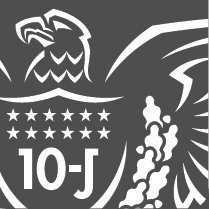First Cycle Rating Process
As outlined in External LinkSR 19-04-11/CA 11-5, Supervision of Savings and Loan Holding Companies, the Federal Reserve plans to use the first supervisory cycle to learn more about the unique operational features of SLHCs and how the holding company supervision framework can most effectively be implemented at these companies. The first cycle of SLHC inspections will be instructive to both the Federal Reserve and SLHC management in terms of supervisory expectations of the Federal Reserve and the unique operating conditions of SLHCs, particularly those SLHCs that engage primarily in commercial, insurance, or broker-dealer activities.
During the first supervisory cycle, the Federal Reserve will be issuing an "indicative rating" that indicates to the SLHC how it would be rated if the Board of Governors' (Board) RFI/C(D) rating system, commonly referred to as RFI, was formally applied. Similar to a traditional inspection, the findings accompanying the indicative rating will include a detailed description of deficiencies that need to be addressed by management and/or the board of directors. Deficiencies that are correctable in the normal course of business; do not pose an immediate threat to the safety and soundness of the organization; or do not represent a violation of applicable law or regulation or failure to comply with any outstanding enforcement action, commitment, or supervisory directive generally should not result in formal or informal enforcement actions.
The Federal Reserve's RFI Rating System
As noted in External LinkSR 19-04/CA 11-5, the Board intends on issuing a notice outlining application of the RFI rating system to SLHCs and any modifications that the Board believes are necessary to accommodate SLHCs. The following provides a brief summary of the RFI rating system.
The Federal Reserve System's External Linkbank holding company rating system helps define a company's condition in a systematic way. The rating system consists of five core components, styled "RFI/C(D)," and eight subcomponents. Each of the components/subcomponents is rated on a 1 to 5 scale in ascending order of supervisory concern.
The ratings assigned depend on the company's size and complexity. Noncomplex companies with consolidated assets of $1 billion or less receive only the Risk Management (R) and Composite (C) ratings, both of which generally mirror the management and composite ratings assigned to the lead bank by its primary regulator. Companies with consolidated assets greater than $1 billion, and those considered "complex" regardless of size, receive the full complement of ratings.
R - Risk Management: Represents an evaluation of the ability of the board and management to identify, measure, monitor and control risk. Subcomponents (Includes four individually rated subcomponents)
F - Financial Condition: Represents an evaluation of the consolidated organization's financial strength, focusing on the ability of the organization's resources to support the level of risk associated with its activities. Subcomponents (Includes four individually rated subcomponents)
I - Impact: An assessment of the impact of the nondepository entities (bank holding companies and nonbank/financial subsidiaries) on the subsidiary depository institutions. Includes assessment of both financial condition and risk management practices, strategic considerations, operational, legal and reputational risks, cash flow and leverage.
C - Composite: Represents the overall assessment of the organization based on the quality and effectiveness of consolidated risk management, financial strength and the impact of the parent company and nondepository subsidiaries on the subsidiary depository institutions.
D - Depository Institutions: Identifies the overall condition of the subsidiary depository institution(s) and will generally reflect the composite CAMELS rating(s) assigned by the primary regulator(s).
